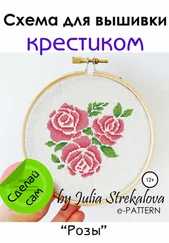Christopher alexander - A pattern language
Здесь есть возможность читать онлайн «Christopher alexander - A pattern language» весь текст электронной книги совершенно бесплатно (целиком полную версию без сокращений). В некоторых случаях можно слушать аудио, скачать через торрент в формате fb2 и присутствует краткое содержание. Жанр: Прочая научная литература, на английском языке. Описание произведения, (предисловие) а так же отзывы посетителей доступны на портале библиотеки ЛибКат.
- Название:A pattern language
- Автор:
- Жанр:
- Год:неизвестен
- ISBN:нет данных
- Рейтинг книги:3 / 5. Голосов: 1
-
Избранное:Добавить в избранное
- Отзывы:
-
Ваша оценка:
- 60
- 1
- 2
- 3
- 4
- 5
A pattern language: краткое содержание, описание и аннотация
Предлагаем к чтению аннотацию, описание, краткое содержание или предисловие (зависит от того, что написал сам автор книги «A pattern language»). Если вы не нашли необходимую информацию о книге — напишите в комментариях, мы постараемся отыскать её.
A pattern language — читать онлайн бесплатно полную книгу (весь текст) целиком
Ниже представлен текст книги, разбитый по страницам. Система сохранения места последней прочитанной страницы, позволяет с удобством читать онлайн бесплатно книгу «A pattern language», без необходимости каждый раз заново искать на чём Вы остановились. Поставьте закладку, и сможете в любой момент перейти на страницу, на которой закончили чтение.
Интервал:
Закладка:
This space can be felt: it is distinct:—a place . . . and it is convex. This space is vague }amorphous , “nothing.”
Now, what is the functional relevance of the distinction between “positive” and “negative” outdoor spaces. We put forward the following hypothesis. People jeel com] or table in spaces which are “ positive ” and use these spaces; people jeel relatively uncomfortable in spaces zvhich are “ negative ” and such spaces tend to remain unused.
519
BUILDINGS
The case for this hypothesis has been most fully argued by Camillo Sitte, in City Planning According to Artistic Principles (republished by Random House in 1965). Sitte has analyzed a very large number of European city squares, distinguishing those which seem used and lively from those which don’t, trying to account for the success of the lively squares. He shows, with example after example, that the successful ones—those which are greatly used and enjoyed—have two properties. On the one hand, they are partly enclosed; on the other hand, they are also open to one another, so that each one leads into the next.
The fact that people feel more comfortable in a space which is at least partly enclosed is hard to explain. To begin with, it is obviously not always true. For example, people feel very comfortable indeed on an open beach, or on a rolling plain, where there may be no enclosure at all. But in the smaller outdoor spaces —gardens, parks, walks, plazas—enclosure does, for some reason, seem to create a feeling of security.
Tr seems likely that the need for enclosure goes back to our most
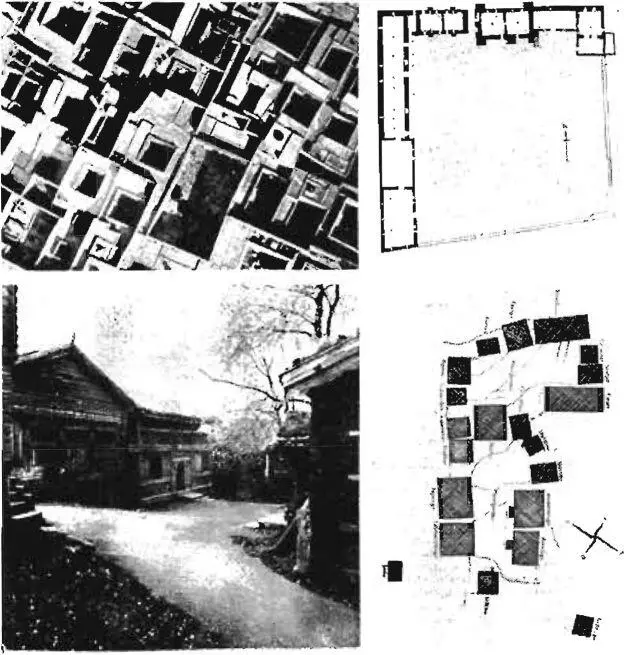 |
| Four examples of positive outdoor space. |
520
10 6 POSITIVE OUTDOOR SPACE
primitive instincts. For example, when a person looks for a place to sit down outdoors, he rarely chooses to sit exposed in the middle of an open space—he usually looks for a tree to put his back against; a hollow in the ground, a natural cleft which will partly enclose and shelter him. Our studies of people’s space needs in workplaces show a similar phenomenon. To be comfortable, a person wants a certain amount of enclosure around him and his work—but not too much—see workspace enclosure(183). Clare Cooper has found the same thing in her study of parks: people seek areas which are partially enclosed and partly open—not too open, not too enclosed (Clare Cooper, Open Space Study, San Francisco Urban Design Study , San Francisco City Planning Dept., 1969).
Most often, positive outdoor space is created at the same time that other patterns are created. The following photograph shows one of the few places in the world where a considerable amount of building had no other purpose whatsoever except to create a positive outdoor space. It somehow underlines the pattern’s urgency.
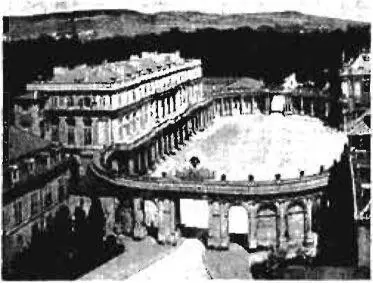 |
| The squ-are at Nancy. |
When open space is negative, for example, L-shaped—it is always possible to place small buildings, or building projections, or walls in such a way as to break the space into positive pieces.





Transform this ...... to this.
BUILDINGS
 |
| v |
And when an existing open space is too enclosed, it may be possible to break a hole through the building to open the space up.
Transform this ...... to this.
Therefore:
| convex shape |
|---|
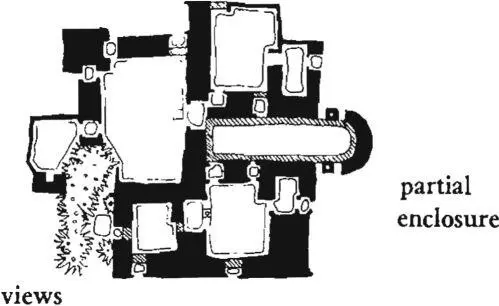 |
♦S#
Make all the outdoor spaces which surround and lie between your buildings positive. Give each one some degree of enclosure; surround each space with wings of buildings, trees, hedges, fences, arcades, and trellised walks, until it becomes an entity with a positive quality and does not spill out indefinitely around corners.
Place wings of light(107) to form the spaces. Use open trellised walks, walls, and trees to close off spaces which are too exposed— tree places (171 ), garden wall(173), trellised walk(174); but make sure that every space is always open to
some larger space, so that It is not too enclosed—hierarchy OF OPEN SPACE ( I 14) . Use BUILDING FRONTS (l22) tO help create the shape of space. Complete the positive character of the outdoors by making places all around the edge of buildings, and so make the outdoors as much a focus of attention as the buildings—building edge (160). Apply this pattern to courtyards WHICH LIVE (115), ROOF GARDENS ( I I 8) , PATH SHAPE (l2l), OUTDOOR ROOM (16 3), GARDEN GROWING WILD (172).
| 107 WINGS OF LIGHT** |
|---|
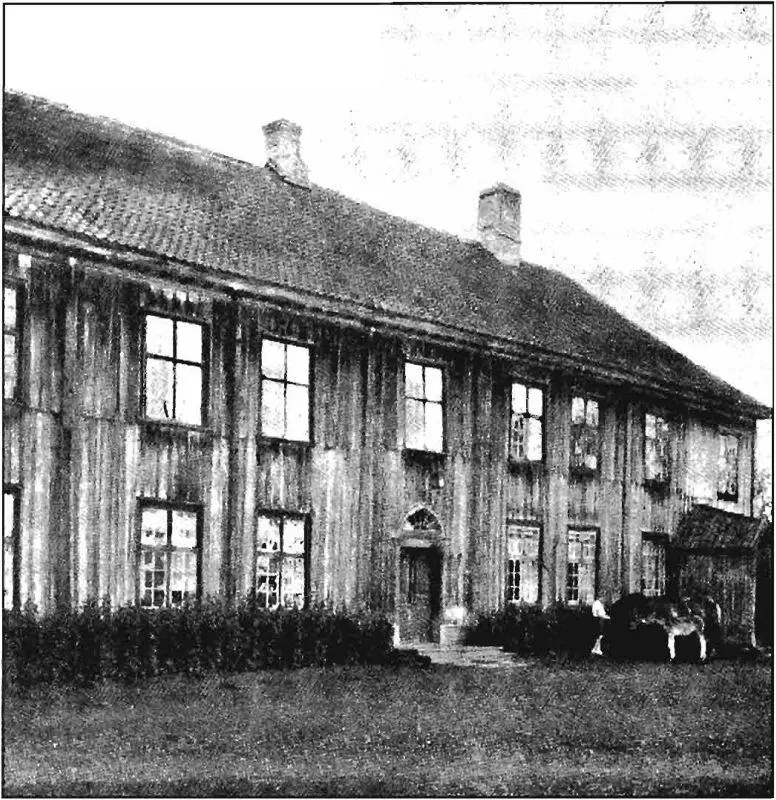 |
52+
. . . at this stage, you have a rough position for the building or buildings on the site from south facing outdoors (105) and positive outdoor space (106). Before you lay out the interior of the building in detail, it is necessary to define the shapes of roofs and buildings in rather more detail. To do this, go back to the decisions you have already made about the basic social components of the building. In some cases, you will have made these decisions according to the individual case; in other cases you may have used the fundamental social patterns to define the basic entities—
THE FAMILY (75), HOUSE FOR A SMALL FAMILY (76), HOUSE FOR A COUPLE (77), HOUSE FOR ONE PERSON (78), SELF-GOVERNING WORKSHOPS AND OFFICES (80), SMALL SERVICES WITHOUT RED TAPE (8l), OFFICE CONNECTIONS (82), MASTER AND APPRENTICES
(83), individually owned shops (87). Now it is time to start giving the building a more definite shape based on these social groupings. Start by realizing that the building needn’t be a massive hulk, but may be broken into wings.
'I*
Modern buildings are often shaped with no concern for natural light—they depend almost entirely on artificial light. But buildings which displace natural light as the major source of illumination are not fit places to spend the day.
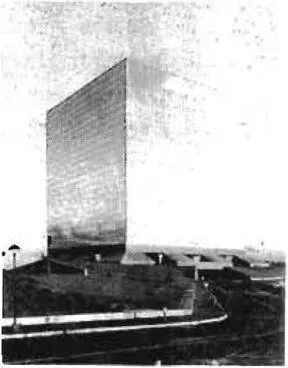 |
| A monster building—no concern for daylight inside. |
I INDEPENDENT REGIONS
Читать дальшеИнтервал:
Закладка:
Похожие книги на «A pattern language»
Представляем Вашему вниманию похожие книги на «A pattern language» списком для выбора. Мы отобрали схожую по названию и смыслу литературу в надежде предоставить читателям больше вариантов отыскать новые, интересные, ещё непрочитанные произведения.
Обсуждение, отзывы о книге «A pattern language» и просто собственные мнения читателей. Оставьте ваши комментарии, напишите, что Вы думаете о произведении, его смысле или главных героях. Укажите что конкретно понравилось, а что нет, и почему Вы так считаете.








